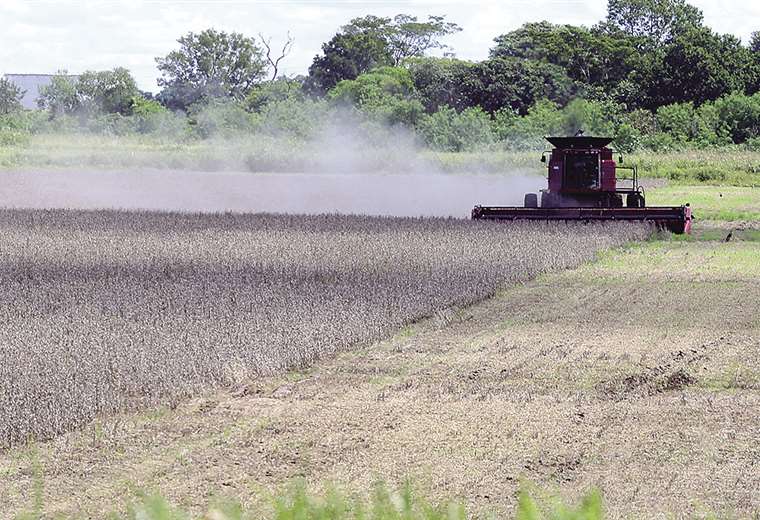June 9, 2023, 7:19 AM
June 9, 2023, 7:19 AM
One of lime and one of sand. The oilseed sector of Santa Cruz reports a coverage of planting of 1,327,375 hectares of soybeans, corn and sorghum in the summer agricultural campaign -represents a growth of 7% of the cultivated area in relation to the same productive cycle of 2022- and reaches a production of 2.8 million tons of grains, an amount similar to that registered last year. They attribute the productive stagnation to the climate -extreme drought- and to the attack of pests on the crops.
According to the general manager of the Association of Oilseed Producers and Wheat (Anapo), Jaime Hernández, the primary link in the sector managed to cover 1,327,375 hectares of grains (soybeans, corn and sorghum), which represents an increase of 7% compared to the previous summer campaign. And regarding production, he hinted that 2.8 million tons of grains were collected, a similar amount to the previous production cycle.
Of the factors that conditioned a greater production of grainsHernández attributed it to climatic factors -prolonged drought- at the time of planting, which prevented advancing at the opportune moment for the crops, and later excessive rainfall in the period of crop development and harvest, which prevented making a adequate control of pests and diseases, which affected the productivity of the crops.
It transpired that the attack and spread of mites impacted on yields. In this regard, Hernández stated that it is one of the pests that can significantly decrease the yield of soybeans and the problem presented in the final stage of the crop was that insecticides could not be applied to control the pest, due to the excess humidity that made it impossible to the entry of fumigation machinery to the production fields.
Impact on productivity
According to the president of the Agricultural Chamber of Small Producers of the East (Cappo), Isidoro Barrientos, the presence of mites in the plots (Pailón, Cuatro Cañadas and San Julián) impacted the reduction of up to 40% of productivity in the soy fields. He clarified that the incidence was not general, but that he learned that there were cases where some producers managed to harvest 900 kilos per ton. In these productive areas, average yields exceed two tons per hectare.
He noted that the fall in productivity and soybean prices in the domestic and foreign markets, in addition to the rise in the price of imported agricultural inputs that incite the escalation of production costs, have the economy “suffocated” and to the limit. productive.
The volatility of commodity prices had an impact on the price of oilseed products (grain, oil and flour).
In productive areas, more than one farmer endorses the importance of moving decisively and quickly in the approval of new soybean and corn biotechnology events, mainly to increase productivity and guarantee the production of strategic food for the country.

















